A Customer Journey Map does not only help settled companies to improve their existing services or products. It is also very helpful for new business starters to find out about how potential customers think and act, what their needs and emotions are, and how to best reflect that. Susanne Kreuz, user experience architect and UX researcher, tells the story of how journey mapping with Custellence played a part in helping participants of the SINGA Factory startup program to develop their offer and enhance their business skills.
Who loves to fail?
Starting a new business is a big adventure that comes with many challenges. Founding a company with a partner might be easier, but sometimes it’s hard to find the right co-founder. In any case, you are lucky having a coach or role model that supports you, guides you, provides business advice, and gives honest feedback. In the best case, you have the option to be part of a startup program that leads you through the different phases of how to found a successful business and supports your exciting new life as an entrepreneur.
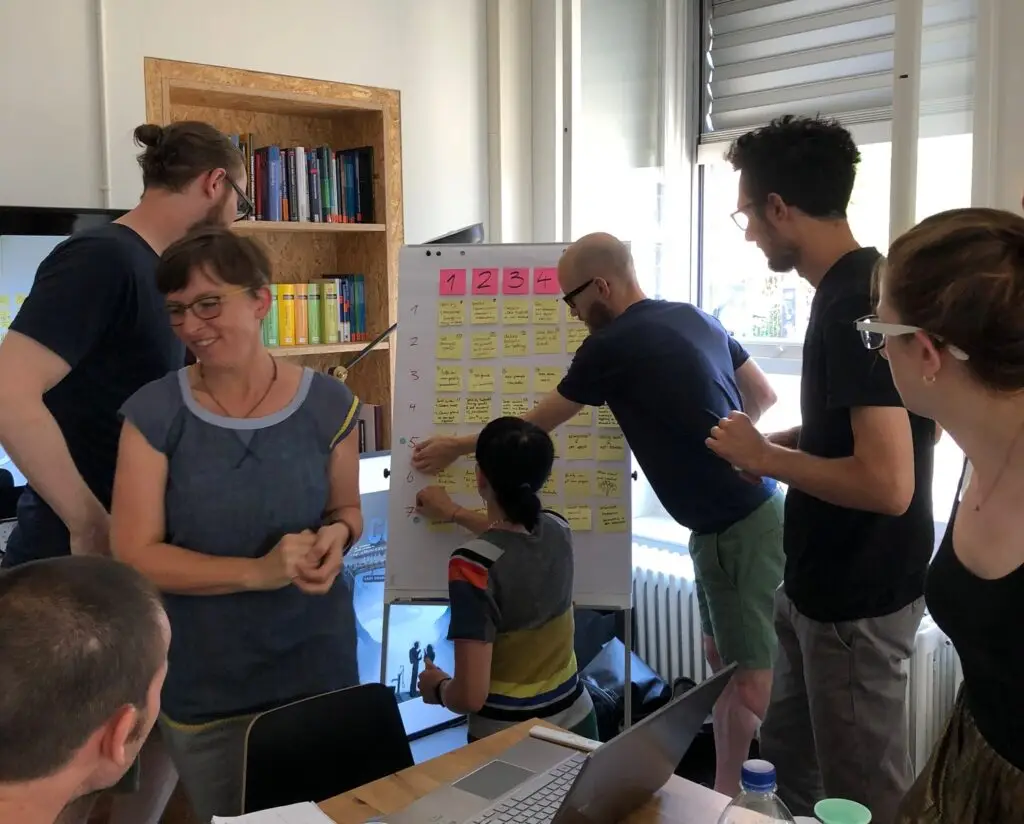
Photo by SINGA Switzerland
While I was supporting refugees learning German in my home country, the SINGA Factory part time startup program sounded like a great opportunity to contribute my professional skills in human centered design. To develop and test their business plans, and to connect to a local network, we decided to run a collaborative workshop for the SINGApreneurs, the program participants, together with participants from the SINGA team and the local community network.
From assumptions to proven data
While some of the SINGApreneurs had launched a business already, others just had an idea on their mind about what they wanted to do. The stunning business ideas span from Indian food to exotic travel experiences, from digital matching platforms to social support through sport. But how to get started if you have little experience and many assumptions? And what if you are not sure how things work in your new home country, in a different branch, or in a complex business? According to the human centered design process, learning about your target group is the key to success!
To get a step forward in creating a user centric solution, the diverse teams first developed personas for their specific target groups and afterwards continued working on on their individual customer journeys. We started our first workshop session with real time user research, simply by sending the teams into the nearby coworking café. The task was to interview and observe people in the building, to find out about the current offers, to collect feedback, and come back with ideas and insights on how to improve the café. Talking to strangers might require one to step out of their comfort zone, but mostly was fun, and very insightful!
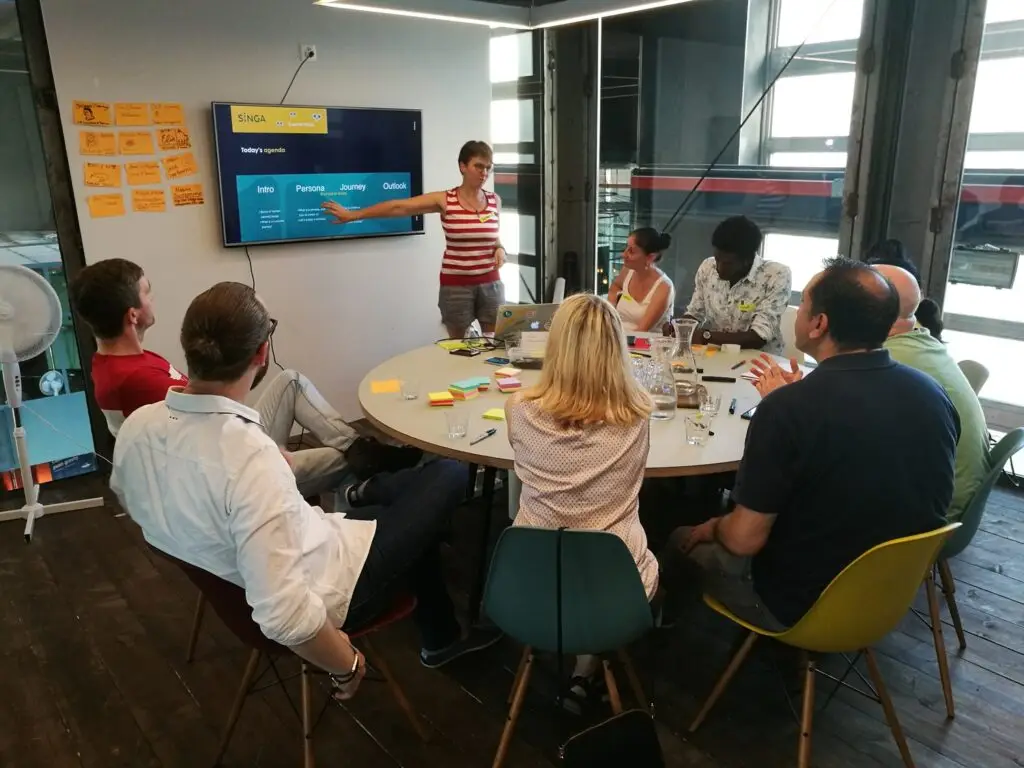
Photo by SINGA Switzerland
Together as a group, we discussed, categorized and merged all the positive and negative feedback and data we collected, into a persona template. This realistic picture of our main target group - including context, tasks, needs, and goals - was a good starting point to create our first customer journeys. Working in teams again, we wrote down the single journey phases and steps, all touchpoints, the thoughts and emotions of the customer, and our business opportunities on colored post-it notes, and put them in the correct order on a big flipchart paper template. Doing so, we successfully created our first straight forward journey for a “freelancer working in a coworking cafe”.
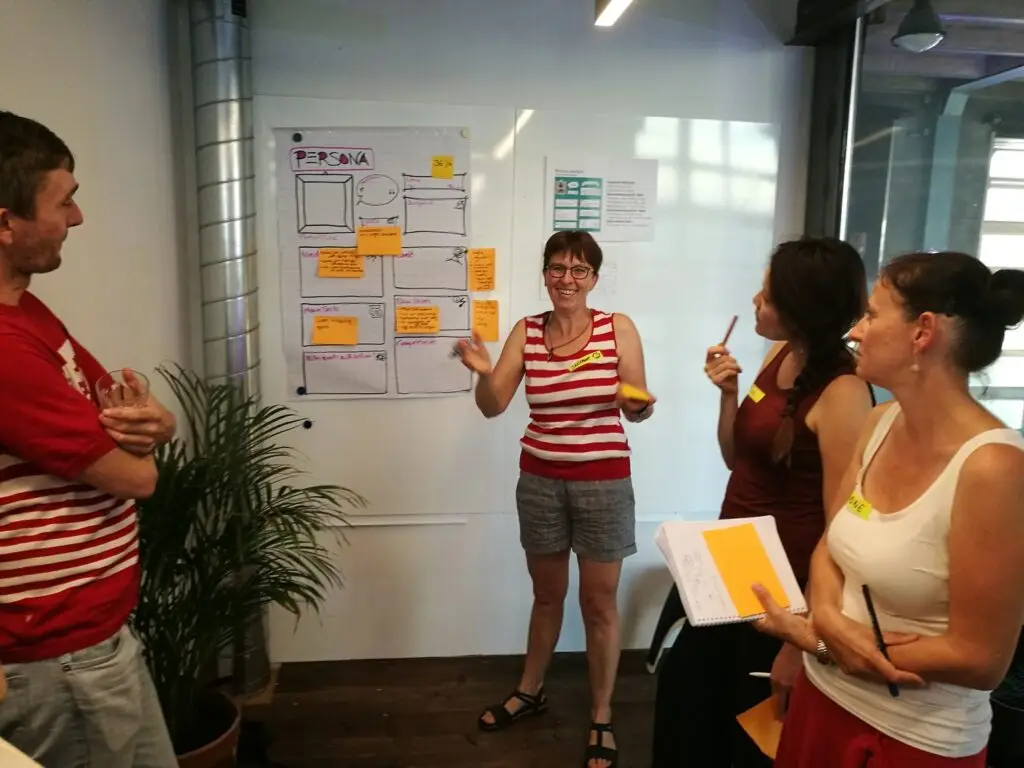
Photo by SINGA Switzerland
From paper to digital journey maps
In order to understand what a customer journey is about, and how to create it, working on paper is always great starting point. It’s especially helpful when working with people with a non-design background - such as users or colleagues from other departments - to get across a common understanding of the “big picture”, why you are creating what you actually do.
From my experience as a ux trainer and freelance consultant, these are the main advantages of mapping the journey on paper first:
- great to learn a central service design method
- captures the big picture on a poster
- easy to hang on the wall and make it visible
- cool to collaborate closely and discuss ideas face to face
- easy to get started with a first draft
- helps to establish a user centered mindset across the company
But whenever there is a light there is also shadow. Here are the disadvantages I experienced while working with paper:
- post-its might fall apart quickly
- no suitable place to hang the journey up
- paper does not work for remote teams
- might be thrown away by accident
- handwriting might be hard to read
- to some people, paper does not look valuable or correct
While I recommend creating any customer journey map on paper first, it definitely makes sense to transform your work on paper into a digital version in the next step. But what is the best tool and format to do so? Taking a picture of the journey is required to ensure that your digital version incorporates all the content from what’s on paper, but that’s not what I mean with digitising a journey at all, and this is why: A customer journey map is a living document! A static digital version such as a picture assumes that your customer journey is finished - but that’s actually not the idea. It is a snapshot of a current state of a business that you want to turn into an ideal journey: a journey of the as-is or current state, and the to-be or ideal journey. The documented journey is not something to forget about, but created in order to improve the customer experience from poor, average, or good, to excellent.
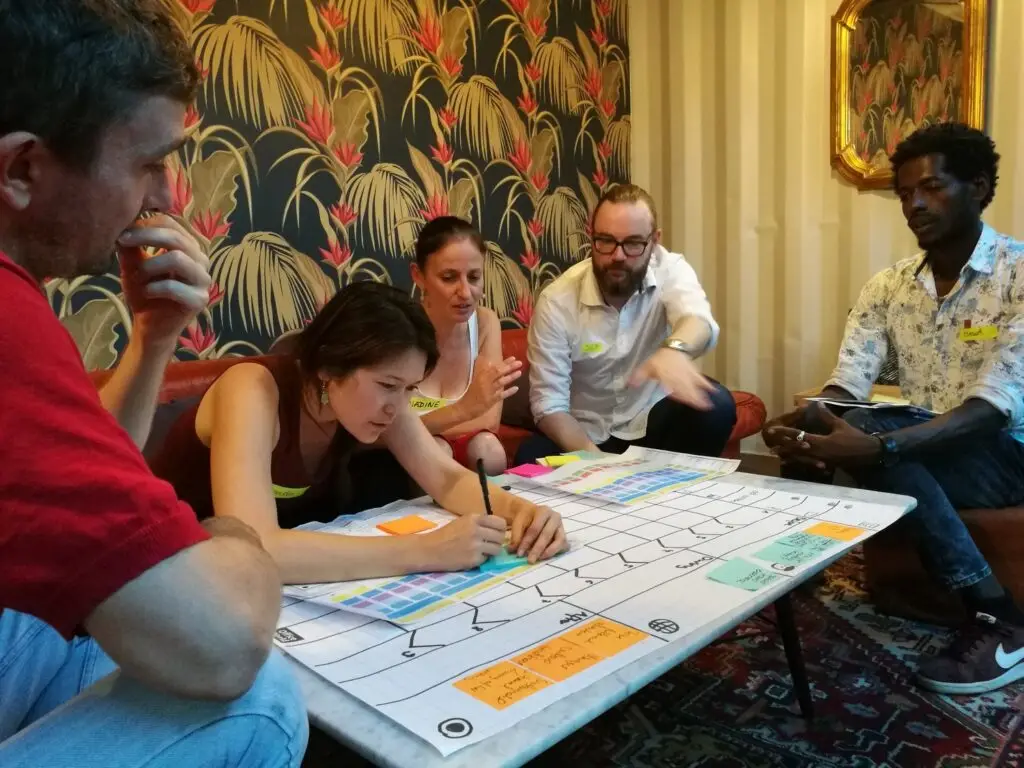
Photo by SINGA Switzerland
A customer journey is a tool itself
Of course you can create a user journey map in a design tool such as Adobe Illustrator or Affinity Designer (or ask any creative visual designer to do so). In this case you might end up with a beautiful poster to pimp your office, justifying the amount of money that was spent in user research. But, as long as you don’t have design tool licence or skills, you will always depend on the designer to make updates and share changes. I know others who have created customer journeys simply using MS Excel, and I did so once, too. Sheets are great because rows and lines reflect the structure of a journey. But when it comes to design and typography, the format options are very basic. And getting rid of automatic calculation when entering numbers is definitely a pain point!
So, let’s have a closer look at our needs as professional users and customer experience designers:
As we do not only want to create, but also need to update, manage, and share our customer journeys regularly with our stakeholders - such as managers, customers, users, designers, developers, marketeers, and maybe others - we need a tool that supports all of our business requirements.
Otherwise, investing time and money in creating a customer journey does not make much sense. Therefore, I was happy to get the opportunity to use Custellence, an online journey mapping tool in my second session working with the SINGApreneur teams. Custellence provides many useful templates (e.g. for e-business, online shop, retail, … ) which is great to get started. To follow up on the first workshop, I created a template that comes with the same structure, icons, and color scheme as the one we used in the paper exercise, including explanations for every single lane. I copied a version for each startup team that was easy to share with the SINGApreneurs by email so they could immediately start to fill out, enhance, edit, and add their own content.
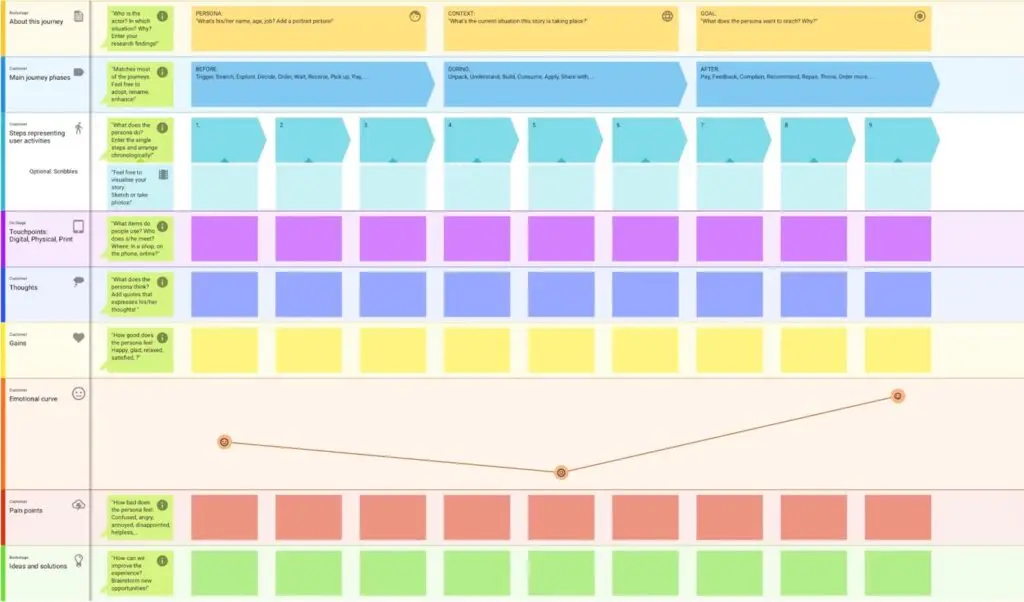
Susanne’s journey map template created in Custellence
After that, the team continued to create a customer journey using a laptop. It was amazing to see how effortless it was everyone to get familiar with Custellence. Most of the features are almost self-explanatory and easy to use. The journeys started to grow and became more detailed quite fast.
Unfortunately, our second workshop was too short to answer all of their business related questions, and to create a full customer story for each team. More research was required, more data to be collected, more questions to be answered, and more ideas to be found. As homework, the SINGApre neurs had to follow up their results with their coaches. With help of Custellence it was easy for everybody in the team to check and review the drafted journeys. Coaches, team members and mates, and even potential users contributed their feedback. I was also happy to explain more advanced functions to those who were further ahead. We explored useful features such as exporting a journey map to PDF and printing it on a large scale, as well as turning the the current journey into an ideal journey with help of the status settings.
Life is a Pitch!
Customer journey mapping definitely supports startups to align their ideas to their customers needs. Using the service design method and digital tool helped to improve and enhance SINGApreneurs startup business skills. The resulting service blueprints will hopefully bring their innovative business ideas another step ahead.
Thanks to Custellence, the SINGApreneurs of the Zurich program can manage their customer journey maps in a digital format that can be easily updated, shared, and kept alive.
We are now looking forward to all the customer centric offers coming alive and being available on the Swiss and the international market in a near future.

Photo by Innes Welbourne for SINGA Switzerland
About SINGA
The SINGA Factory is supported by Engagement Migros - A Development Fund of the Migros Group.
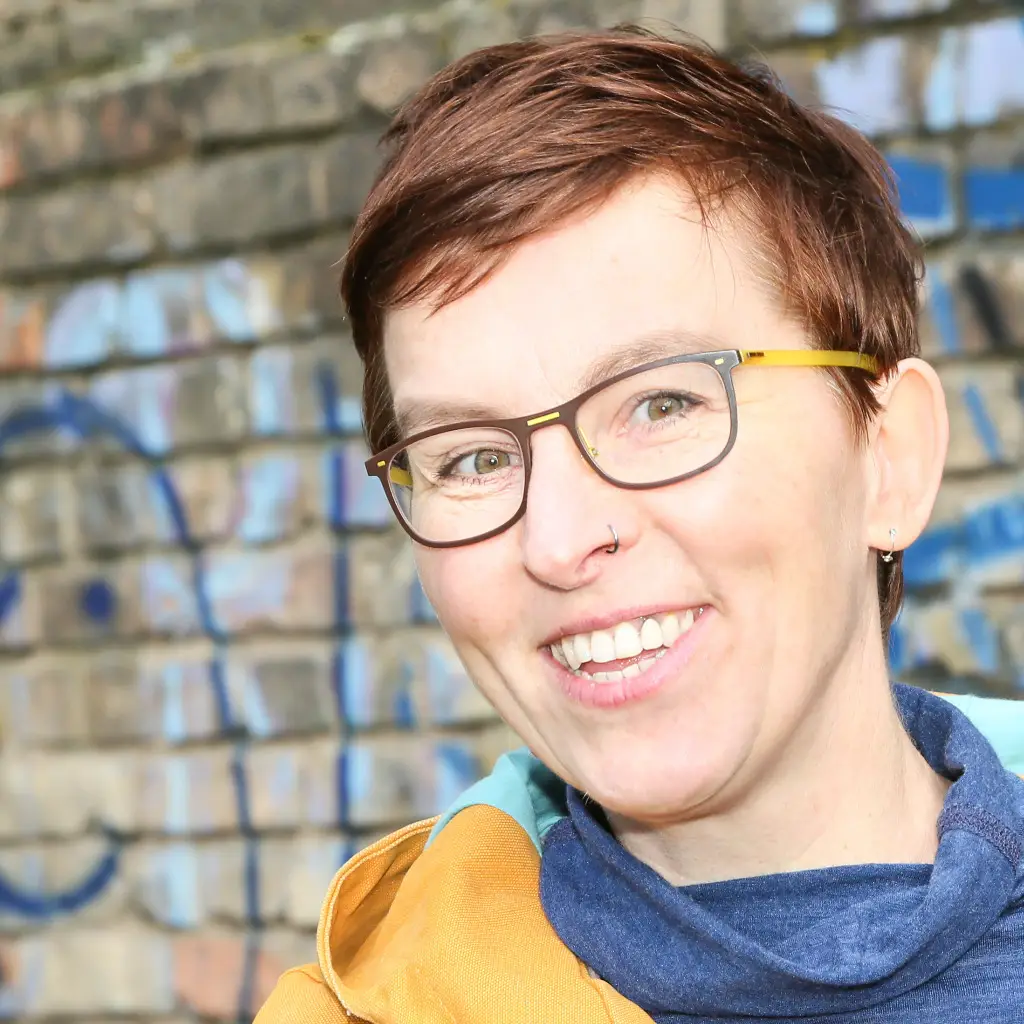
Susanne Kreuz, is a digital expert from southern Germany with focus on user centered design. She help start-ups and international players to transform good ideas into better products.
Visit her website


